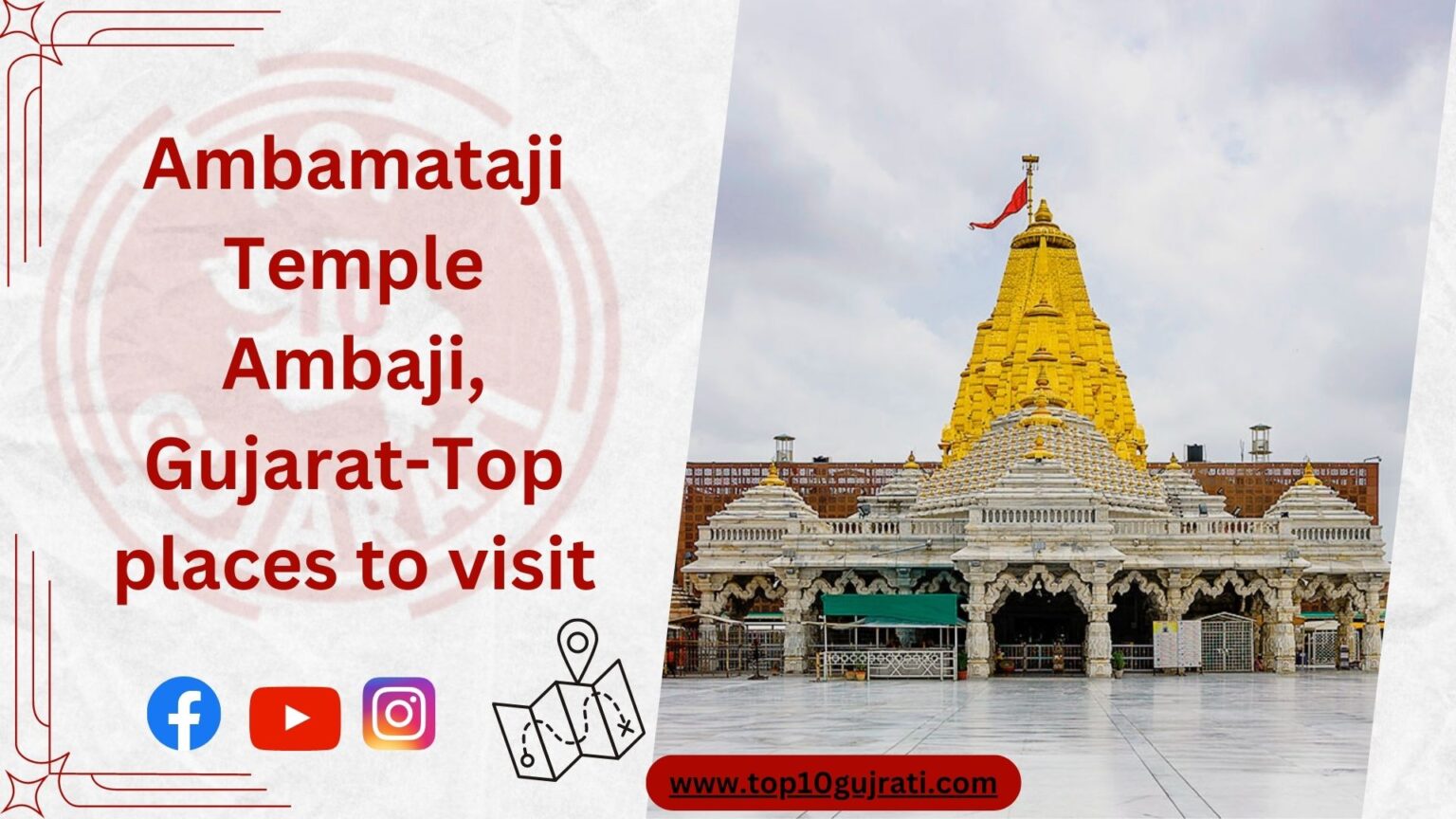Ambaji Temple
Ambaji Mandir, also known as Ambaji Temple, is a renowned Hindu temple dedicated to the goddess Ambaji. It is located in the town of Ambaji, in the Banaskantha district of Gujarat, India. Ambaji is considered one of the 51 Shakti Peethas, which are sacred sites associated with the goddess Shakti.
The temple holds great religious significance and is visited by millions of devotees every year, especially during the festive season of Navratri. The main deity worshipped at Ambaji Temple is Amba Ma, an incarnation of the goddess Durga or Parvati. The temple is situated in the Arasur Hills, providing a beautiful panoramic view of the surrounding areas.
The temple architecture is characterized by its simplicity and elegance. The idol is believed to be self-manifested and is depicted without a mouth, symbolizing the power of silence.
Devotees offer prayers, perform rituals, and seek blessings from the goddess Amba Ma. The temple complex also includes other shrines dedicated to various deities, such as Hanuman, Ganesha, and Nandi. The atmosphere is filled with devotion, and the temple premises have several facilities for pilgrims, including accommodation and dining halls.
Ambaji Temple holds a special place in the religious and cultural life of Gujarat. It attracts visitors not only from Gujarat but also from other parts of India and abroad. The temple is surrounded by the picturesque Aravalli Hills and provides a serene and spiritual atmosphere for devotees to connect with the divine.
The history of Ambaji Mandir is deeply rooted in Hindu mythology and legends. According to ancient texts and folklore, the heart of the goddess Sati (also known as Ambaji or Amba) is said to have fallen at the exact location where the temple stands today. It is believed to be one of the 51 Shakti Peethas, which are revered as the divine abodes of the goddess Shakti.
The origin of Ambaji Mandir dates back to ancient times, and the exact historical records of its construction are not well documented. However, it is believed that the temple has been a significant place of worship for centuries. The religious sanctity of the site attracted devotees from far and wide, contributing to the temple’s prominence and development over time.
Throughout history, various rulers and dynasties have made contributions to the temple. The temple complex underwent renovations and expansions under the patronage of different rulers, including the Solanki dynasty and the Gaekwads of Baroda. These renovations aimed to enhance the temple’s architectural grandeur and accommodate the increasing number of pilgrims.
Ambaji Mandir has remained a center of devotion and pilgrimage for devotees from all walks of life. It holds immense cultural and religious significance, especially during the festive season of Navratri, when thousands of devotees gather to seek the blessings of the goddess Amba Mata.
Over the years, the temple has undergone maintenance and restoration efforts to preserve its heritage and ensure a comfortable experience for devotees. The temple administration and local authorities continue to manage the affairs of the temple and facilitate the smooth conduct of religious ceremonies and rituals.
Ambaji Temple Timings:-
Ambaji Temple Aarati-Darshan Timing
Aarti Morning: -07.30 to 08.00
Darshan Morning: -08.00 to 11.30
Rajbhog Afternoon-12.00to12.30
Darshan Afternoon-12.30to04.30
Aarti Evening: -07.00 to 07.30
Darshan Evening: -07.30 to 09.00
How to reach Ambaji Temple:
By Air: The nearest airport to Ambaji is the Sardar Vallabhbhai Patel International Airport in Ahmedabad, Gujarat. From there, you can hire a taxi or take a bus to reach Ambaji, which is approximately 180 kilometers away.
By Train: The nearest railway station is the Abu Road Railway Station, located about 20 kilometers from Ambaji. Trains from major cities like Ahmedabad, Mumbai, Delhi, and Jaipur connect to Abu Road. From Abu Road, you can hire a taxi or take a bus to reach Ambaji.
By Road: Ambaji is well connected by road. State transport buses and private buses operate regular services from major cities in Gujarat, such as Ahmedabad and Vadodara, as well as neighboring states. You can also drive to Ambaji using your private vehicle or hire a taxi.
Gabbar Tirth:-
Gabbar Tirth, also known as Gabbar Hill or Gabbar Parvat, is a significant pilgrimage site located near the town of Ambaji in the Banaskantha district of Gujarat, India. It is situated approximately 2 kilometers away from Ambaji Temple and holds great religious importance for devotees.
The history of Gabbar Tirth is intertwined with the legends of the goddess Amba Mata. According to mythology, after the goddess Sati immolated herself in the sacrificial fire, her skull (gabha) is believed to have fallen at Gabbar Hill. This is said to be the spot where the goddess Amba Mata resides and blesses her devotees.
The name “Gabbar” is derived from the word “gabha” (skull) and is associated with the sacredness of the location. The hill is considered to be a manifestation of the goddess Amba Mata herself and is believed to possess immense spiritual power.
Devotees visit Gabbar Tirth to seek the blessings of the goddess and offer their prayers. The hilltop provides a breathtaking panoramic view of the surrounding landscapes, making it a serene and peaceful place for contemplation and spiritual practices.
The pilgrimage to Gabbar Tirth involves climbing a series of steps that lead to the hilltop. Along the way, devotees encounter various shrines and sacred sites dedicated to different deities, including Hanuman, Ganesha, and Nandi. These spots are revered and worshipped by pilgrims as they make their way to the main shrine atop the hill.
At the summit of Gabbar Hill, there is a small temple dedicated to Amba Mata. The main attraction is a sacred cave known as the “Gabbar Gufa,” which is believed to be the exact spot where the goddess’s skull fell. Devotees can enter the cave to offer their prayers and seek blessings.
Gabbar Tirth attracts a large number of devotees, especially during the Navratri festival, when pilgrims undertake a significant journey to visit both Ambaji Temple and Gabbar Tirth as part of their religious observances.
The history and legends associated with Gabbar Tirth have been passed down through generations, making it a revered place of worship for devotees seeking the divine blessings of Amba Mata.



